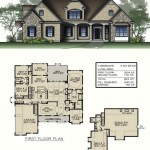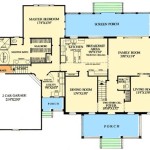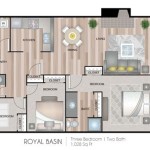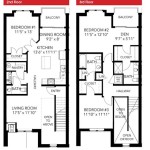Create Your Own Floor Plan
Designing a floor plan is a crucial step in building or renovating your home. It sets the foundation for the layout, functionality, and aesthetics of your living space. Whether you're an experienced architect or a first-time homeowner, creating your own floor plan can be an empowering and rewarding experience. Here's a comprehensive guide to help you get started:
1. Determine Your Needs
Before you start drawing lines, take time to assess your specific needs and requirements. Consider the number of occupants, their ages, and their lifestyles. Think about the activities that take place in your home and the spaces that you need to accommodate them. Do you need a dedicated home office? A large family room for gatherings? A separate dining area? Jot down a list of your must-have rooms and their desired sizes.
2. Choose a Design Software
There are numerous software programs available to assist you in creating floor plans. Some popular options include AutoCAD, SketchUp, and Floorplanner. These programs provide user-friendly interfaces, pre-built symbols, and advanced tools to simplify the design process. Choose a software that aligns with your skill level and budget.
3. Establish a Scale
When drawing your floor plan, it's essential to use a consistent scale. This will ensure that the dimensions of your rooms are accurate and proportional. Most design software allows you to choose a scale from a drop-down menu. Common scales for residential floor plans include 1/4 inch = 1 foot and 1/8 inch = 1 foot.
4. Draw the Exterior Walls
Start by sketching the perimeter of your home. Outline the exterior walls, including any bays, alcoves, or porches. Make sure to indicate the thickness of the walls, as this will affect the interior dimensions.
5. Divide the Space
Once you have the basic shape of your home, start dividing the space into rooms. Draw lines to create walls, windows, and doors. Consider traffic flow and adjacencies. For example, the kitchen should be adjacent to the dining area, and the bedrooms should be near the bathrooms.
6. Add Details
With the basic layout in place, you can start adding details. Include fixtures such as appliances, furniture, and lighting. This will help you visualize the functionality and livability of the space. Don't forget to label the rooms for clarity.
7. Check for Errors and Adjustments
As you finish drawing your floor plan, carefully review it for any errors or inconsistencies. Check the dimensions, ensure that doors and windows open correctly, and make sure that there is adequate space for circulation. Don't hesitate to make adjustments as needed.
8. Get Feedback
Once you're satisfied with your floor plan, it's a good idea to share it with others for feedback. Ask friends, family, or a professional designer to review your design and provide suggestions. Their insights can help you improve the functionality and aesthetics of your home.
9. Finalize and Review
After incorporating feedback and making the necessary adjustments, finalize your floor plan. Double-check the dimensions, ensure that all details are included, and save the plan in a secure location. You may want to make multiple copies for reference during construction.
10. Build Your Dream Home
With a well-designed floor plan in hand, you're ready to start building your dream home. Your plan will serve as a blueprint for the construction process, ensuring that your vision becomes a reality. Enjoy the process of creating a space that perfectly suits your needs and enhances your daily life.

Make Your Own Floor Plans

Make Your Own Blueprint How To Draw Floor Plans

Design Your Own Home House Designing Homes

Floor Plan Creator And Designer Free Easy App

House Plans How To Design Your Home Plan

Floor Plan Creator And Designer Free Easy App

Make Your Own Blueprint How To Draw Floor Plans Drawing House Sketch Plan

House Plans How To Design Your Home Plan

Floor Plans Solution Conceptdraw Com

Creating Your Dream Custom Floor Plan Citadel Signature Homes








